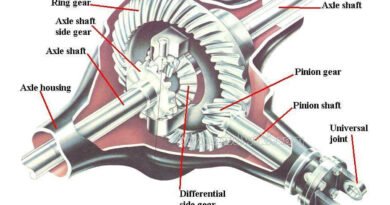How Much To Spend on Your Next Car
Financial experts recommend spending no more than 10% to 15% of your monthly income on car loans, down payment and related expenses such as car insurance and maintenance. Even with these guidelines, it is not always clear how much you should spend on your next car and why. This article breaks down the various considerations.
Figure Out Your Other Expenses
To determine how much leeway you have, calculate your expenses such as credit card debt, rent or mortgage expenses, grocery spending, utility bills, student loan payments, and so on. A lower percentage of expenses means you may have more flexibility.
In many cases, you designate half of your net income toward essentials and living expenses. 20% would go toward paying off debts and putting money into your savings account. The other 30% is for discretionary spending. However, if you don’t have a lot of wants for discretionary spending, some of that money you can spend towards your next car payments.
Try for a Down Payment of 10% to 20%
A down payment of 10% to 20% can significantly lower your monthly payments. Down payments go toward the principal while most of the money in your initial monthly payments goes toward interest.
It is usually worth delaying a car purchase for a year so you can save money for a down payment. If your credit score needs work, the extra year can mean lower interest rates while you improve your credit history, too.
You can further lower your monthly payments with a heftier down payment of, say, 35% or 50%. Don’t put yourself in a precarious financial position by doing this, though. For example, don’t take money from your emergency fund to add to your car down payment. You can always pay more money some months or every month.
You Certainly Can Go Lower Than 10%
The 10% to 15% range is a recommended maximum. If you can go lower, you should. If you find a car you like and it would cost 4% of your monthly income, go for it. Purchasing below your means gives you more money for savings and other expenses.
One caveat, though: Longer loan terms (six or seven years) may bring you below the 10% to 15% range but are not advisable. They add significantly to the price tag of your purchase and carry higher interest rates.
Run various numbers and variables through a car loan calculator and see what you come up with. It may be worth bypassing a more expensive car for a cheaper one if that means a five-year loan versus a seven-year loan.
Similarly, it could make more big-picture sense to take out a five-year loan with monthly payments of about 16% or even 20% of your income compared with a seven-year loan that requires monthly payments of 10% of your current income.
For example, if you have few expenses like you do not pay rent and utilities, you may have more leeway. A similar idea applies if you have a stable job and are expecting a pay raise soon. Do what is comfortable for you, though. Avoid taking hasty risks when it comes to auto loans.
Remember Your Current Vehicle’s Trade-In Value, if Applicable
If you have an existing car you’re planning to trade in as part of your next purchase, remember that value in your calculations. Many dealerships let you put the amount of your trade-in toward your down payment. Some people’s trade-ins cover their entire down payment.
The range of 10% to 15% is good to keep in mind as you figure out how much to spend monthly on your next car. It is only a recommendation, though. Factors such as your down payment size and other expenses play a role in how much flexibility you have.





